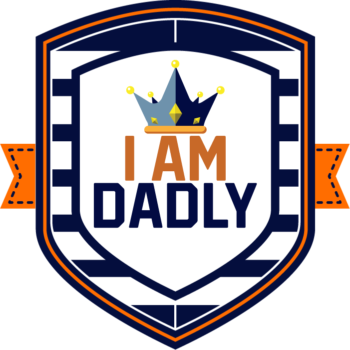
Here is today’s Game and what’s going on.
Here is what I discovered today in our Dadly Daily Declaration readings from Chapter 4 of Atomic Habits by James Clear. The title of this chapter is “The Man Who Didn’t Look Right.”
Today’s chapter begins to delve into Clear’s Four Laws of Behavior Change. Those four laws center on four questions to ask when you are wanting to change your behavior:
- How can I make it obvious?
- How can I make it attractive?
- How can I make it easy?
- How can I make it satisfying?
This chapter starts off the section titled, The 1st Law: Make It Obvious. Here are a few highlights from today’s readings:
- The human brain is a prediction machine. It is continuously taking in your surroundings and analyzing the information it comes across. Whenever you experience something repeatedly, your brain begins noticing what is important, sorting through the details and highlighting the relevant cues, and cataloging that information for future use.
- With enough practice, you can pick up on the cues that predict certain outcomes without consciously thinking about it. Automatically, your brain encodes the lessons learned through experience. Your ability to notice the relevant cues in a given situation is the foundation for every habit you have.
- A supersizing insight about your habits is that you don’t need to be aware of the cue for a habit to begin. You can notice an opportunity and take action without dedicating conscious attention to it. That makes habits useful.
- It can also make them dangerous. As habits form, your actions come under the direction of your automatic and non conscious mind. You fall into old patterns before you realize what’s happening. The more you repeat these patterns, the less likely you become to question what you’re doing and why you’re doing it.
- Before you can effectively build new habits, you need to get a handle on your current ones. This can be more challenging that it sounds because once a habit is firmly rooted in your life, it is mostly non conscious and automatic. If a habit remains mindless, you can’t expect to improve it.
- One of our greatest challenges in changing habits is maintaining awareness of what we are actually doing. One way to become more aware of your behavior is to create a Habits Scorecard. Here’s what you do:
- Make a list of your daily habits.
- Here’s a sample of where your list may start:
- Wake up
- Turn off alarm
- Go to the bathroom
- Check Twitter while going to the bathroom
- Wash Hands
- Brush Teeth
- Here’s a sample of where your list may start:
- Once you have a full list, look at each behavior and ask yourself, “Is this is a good habit, a bad habit, or a neutral habit?”
- If it’s a good habit, write “+” next to it; if it’s a bad habit, write “-“. If it is a neutral habit, write “=”.
- The marks you give to a particular habit will depend on your situation and goals.
- For this exercise, categorize your habits by how they will benefit you in the long run. Generally, good habits will have net positive outcomes; bad habits have net negative outcomes.
- If you have trouble determining how to rate a habit, ask yourself these questions: “Does this behavior help me become the type of person I wish to be? Does this habit cast a vote for or against my desired identity?”
- Habits that reinforce your desired identity are usually good. Habits that conflict with your desired identity are usually bad.
- As you create your Habits Scorecard, there is no need to change anything at first. The goals to simply notice what is actually going on. Observe your thoughts and actions without judgment or internal criticism. Don’t blame yourself for your faults. Don’t praise yourself for your successes.
- Make a list of your daily habits.
Those gems lead us to today’s Dadly Daily Declaration:
The cues that spark our habits become so common that they are essentially invisible. Our responses to these cues are so deeply encoded that it may feel like to the urge to act comes from nowhere. For that reason, you must begin the process of behavior change with awareness.
The more automatic a behavior becomes, the less likely we are to consciously think about it. And when we’ve done something a thousand times before, we begin to overlook things. We’re so used to doing what we’ve always done that we don’t stop to question whether it’s the right thing to do at all. Many of our failures in performance are largely attributable to a lack of self-awareness.
The first step to changing bad habits is to be on the lookout for them. The process of behavior change always starts with awareness. You must recognize your habits and acknowledge the cues that trigger them before you can respond in a way that benefits you.





